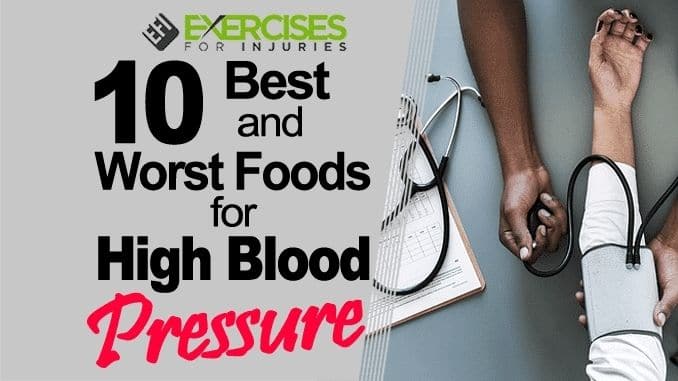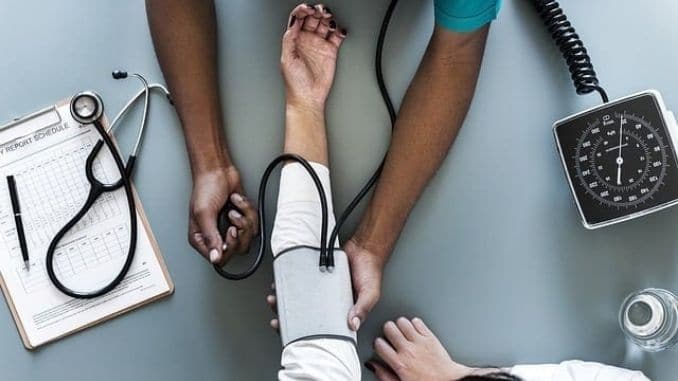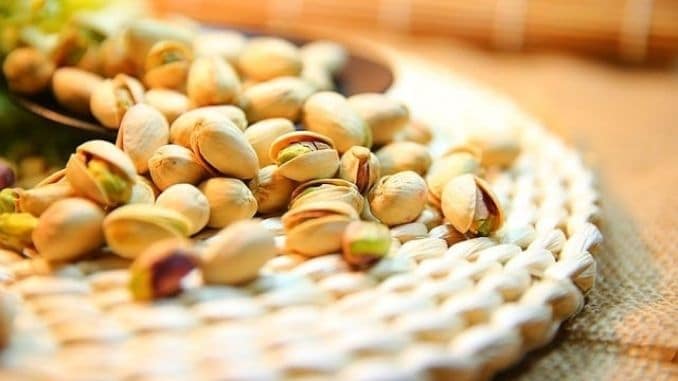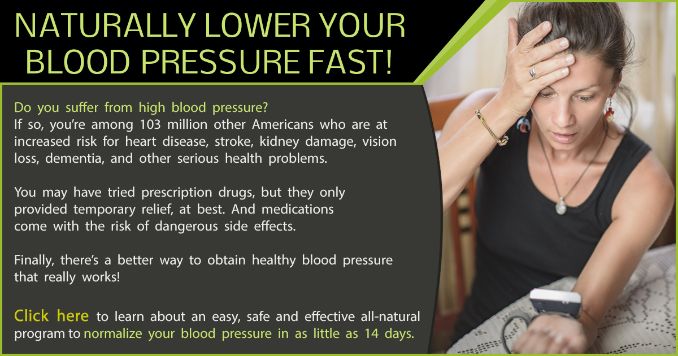
If you’re struggling with high blood pressure, your doctor may recommend medications, but you can also help the situation by changing your diet. In fact, in many cases, people can get their blood pressure under control through diet and exercise alone.
Researchers have been studying this for years and have found that diet can have a major impact on the health of your heart and blood vessels. It is often diet that causes high blood pressure in the first place but, with changes, you can reverse the situation.
Does this mean you have to give up your favorite foods? Maybe, depending on what your favorite foods are, but remember that taste is changed easily and most of what we eat is based on habit. Take a few weeks to make some adjustments, and you may find that you’re soon craving those foods that will help you to feel healthier.
Diet and High Blood Pressure — What Is the Connection?
Throughout the years, researchers have found many elements in the human diet that can affect blood pressure. Sodium (salt) and unhealthy saturated fats, which can lead to overweight and obesity, are both considered no-nos when it comes to healthy blood pressure.
The “DASH” diet — “Dietary Approaches to Stop Hypertension” — was one of the first to be recommended for those diagnosed with high blood pressure to help them bring down their numbers. It was designed by scientists to help treat or prevent the disease and focuses on reducing sodium while increasing other helpful nutrients like potassium, calcium and magnesium. The diet also emphasizes fruits and vegetables and low-fat dairy with moderate amounts of whole grains and other healthy foods like fatty fish, poultry and nuts.
Studies have shown that people who carefully follow the DASH diet can drop their systolic blood pressure (the top number) by as much as 14 points, which can make a big difference in the risk of heart attack or stroke. The standard version keeps sodium levels to less than 2,300 mg a day, while a lower-sodium version goes down to only 1,500 mg a day.
What About Studies That Show Sodium May Not Affect Blood Pressure?
Moreover, there has been some debate recently as to how much effect sodium has on blood pressure. For decades, sodium has been deemed the villain in the disease and a large number of quality studies have shown that a high salt intake leads to high blood pressure. However, some recent studies have indicated it may be more complicated than we thought.
In 2017, for example, Boston University researchers presented the results of their study at the Experimental Biology meeting in Chicago. They found that those participants who consumed less than 2,500 mg of sodium each day (close to the recommended limit of 2,300 mg/day) had higher blood pressure levels than those who consumed higher quantities of sodium.
“While we expected dietary sodium intake to be positively associated with both SBP [systolic blood pressure] and DBP [diastolic blood pressure], the opposite was found,” the authors said.
Other studies have discovered similar findings with results showing that both high- and low-sodium diets can increase the risk of cardiovascular disease while middle-of-the-road amounts seem not to.
Why would this be, when we have so many other studies indicating that too much sodium is a bad thing? Furthermore, researchers have some theories. They believe, for one, that it depends on how much potassium you’re getting in your diet. Individuals in the study mentioned above with the lowest blood pressure also had the highest intake of sodium and potassium. Those with the highest blood pressure had the lowest intake of both. Findings were similar when looking at magnesium and calcium intakes.
These other three minerals — potassium, calcium and magnesium — can greatly affect the health of the heart and the blood vessels. In a 2008 study, researchers noted that increasing intake of these three minerals showed in some studies to help reduce blood pressure in patients with hypertension.
- Potassium: This mineral helps relax the walls of the blood vessels so that blood can flow through more easily; it also protects against an irregular heartbeat
- Magnesium: This mineral also helps blood vessels to relax while ushering calcium and potassium to where they need to go
- Calcium: This mineral helps blood vessels relax and tighten as needed to stimulate blood flow
Interestingly enough, the DASH diet, long recommended to help lower blood pressure, is also rich in these three nutrients.
Other studies have found that sufficient intake of these three minerals is inversely associated with high blood pressure, but supplements aren’t always effective. Instead, food is the best place to get the nutrients you need to help your body stabilize blood pressure levels.
Top 10 Foods to Help Lower Blood Pressure
Which foods should you add to your diet to drop your blood pressure numbers? All healthy foods are good for you and your cardiovascular health, but below are 10 with evidence showing their connection to lowering blood pressure levels.
-
Beet Root Juice
Nitric oxide supplements are sometimes used in treating high blood pressure because they help dilate the arteries, so that blood can flow through more easily. Moreover, nitric oxide (NO) is a natural molecule produced in the body that performs a number of functions, including helping cells communicate with each other. It’s a powerful “vasodilator,” which means it can open up blood vessels and take some of the load off the heart.
Red beets are natural sources of nitric oxide, so when you drink beet juice, you’re providing your body with what it needs to lower blood pressure. In a 2010 study, researchers found that people who drank beetroot juice decreased their blood pressure levels within 24 hours.
A later 2013 review of 16 studies found similar results, with beetroot juice consumption associated with reductions in systolic blood pressure.
-
Berries
Blueberries and strawberries have both been linked with lowering blood pressure levels. Just one cup a week is all you may need. These fruits contain healthy compounds called “anthocyanins” that seem to affect the health of blood vessels.
In one study, researchers found that people who ate the most foods with anthocyanins were 8 percent less likely to be diagnosed with hypertension over the study period of 14 years. Those who ate at least one serving of blueberries per week were 10 percent less likely to develop high blood pressure than those who didn’t eat blueberries.
-
Yogurt
You’ve heard that yogurt can help ease digestion but blood vessels? In a 2016 study, researchers found that women who consumed five or more servings of yogurt a week had a 20 percent lower risk of developing high blood pressure than women who never ate yogurt. Even better, those whose diets most closely matched the DASH diet and who also ate the five servings of yogurt per week had a 31 percent lower risk of developing high blood pressure.
Even more importantly, yogurt may reduce your risk of cardiovascular disease. In a recent 2018 study, researchers examined data from more than 55,000 women and 18,000 men with high blood pressure. They found that higher intakes of yogurt were associated with a 30 percent reduction in risk of heart attack in women and a 19 percent reduction in men.
-
Spinach
Spinach, like beetroot juice, is also a good source of nitric oxide, but it has some other things that can help blood pressure. It’s a great source of potassium, for one, and also contains a good amount of magnesium — two of the minerals found to be critical to blood pressure health.
In a 2015 study, researchers gave healthy participants either spinach soup or asparagus soup (asparagus is a very healthy food, but low in nitric oxide), for seven days. Moreover, they measured blood pressure levels at the start and end of the period. The spinach soup, but not the asparagus soup, helped lower systolic and diastolic blood pressure levels after seven days.
-
Oatmeal
If you’re swallowing something unhealthy for breakfast while you’re running out the door, it’s time to rethink your routine. Moreover, good ol’ oatmeal has been found to help reduce blood pressure. In a 2002 study, researchers compared oatmeal to a low-fiber cereal in two groups of people with high blood pressure during six weeks.
They found that the oatmeal group experienced a 7.5 millimeters of mercury (mm Hg) reduction in systolic blood pressure and a 5.5mm Hg reduction in diastolic blood pressure, while there was virtually no change in the control group.
Researchers believe it’s the fiber in oatmeal that does the trick as it helps absorb LDL “bad” cholesterol so it can’t harm the arteries. With less cholesterol around to clog the arteries, they stay clear and blood flows through more easily.
-
Salmon
Salmon is rich in omega-3 fatty acids, which have been found in some studies to help lower blood pressure. In one review of 70 randomized clinical trials, researchers found that patients with hypertension who received omega-3 supplements (in fish oil) had an average decrease in systolic blood pressure of 4.51mm Hg, while diastolic pressure fell an average of 3.05mm Hg, compared to a placebo group.
In another study on patients with hypertension, those receiving the omega-3 supplement decreased mean systolic blood pressure while those in the placebo group experienced increased blood pressure.
-
Garlic
Time to spice up your meals a bit more. Garlic has shown in many studies to lower high blood pressure. In one study, researchers found that it could drop systolic levels by about 10mm Hg and diastolic levels by about 8mm Hg — levels that are similar to those achieved with standard blood pressure medications.
Garlic seems to help enhance the regulation of nitric oxide, inducing smooth muscle cell relaxation and dilating blood vessels. A 2015 review of 17 trials also found that garlic consistently helped lower blood pressure levels, particularly in patients already diagnosed with hypertension.
-
Dark Chocolate
Afraid of having to give up your favorite foods? This should make you feel better — you can enjoy healthy dark chocolate (with at least 50 to 70 percent cocoa) on a daily basis and do your blood pressure some good.
Researchers examined the results of 15 studies and reported in 2010 that people with hypertension could significantly reduce blood pressure by eating dark chocolate. It seems that the healthy flavanols in the chocolate help to dilate blood vessels, easing blood flow. These flavanols can increase the formation of nitric oxide, too, which most likely explains the blood-pressure-lowering effects.
-
Pistachios
If you’re craving a snack, reach for the pistachios. Although all nuts are good for you (as long as you eat them in moderation), pistachios stand out when it comes to blood pressure. In a 2015 review of 21 clinical trials, researchers found that pistachios seemed to have the strongest effect on blood pressure of all the nuts studied (walnuts, almonds, cashews, hazelnuts, macadamias, pecans, peanuts and soy nuts).
Results showed that pistachios reduced not only systolic blood pressure but diastolic too and that they work on people with and without diabetes. Scientists think the effects are due to the monounsaturated fatty acids in pistachios, along with the high amounts of phytosterols, which help improve cardiovascular health.
-
Pomegranate Juice
This refreshing drink is packed full of healthy antioxidants that are good for your overall health, but studies have also revealed that it can help lower blood pressure. In 2012, researchers reported that 90 percent of people who drank 16 ounces of pomegranate juice a day for four weeks experienced a significant reduction in blood pressure.
The participants also had lower levels of unsaturated fatty acids in their blood. These fatty acids are linked to belly fat, the most dangerous kind, meaning double the benefits.
A later 2017 review of eight clinical trials found similar results. The juice creates significant reductions in both systolic and diastolic blood pressure.
10 Worst Foods for High Blood Pressure
While it’s a great idea to add more of the foods above to your diet. You may also want to limit those that are considered bad for high blood pressure. Moreover, these are foods that are high in sodium, unhealthy fats and sugars — all ingredients that are detrimental to cardiovascular health.
- Deli meats: High in sodium and preservatives, prepackaged deli meats have also been connected with an increased risk of colon cancer. Slice up pieces of the real meat instead.
- Canned soups: Most of these are extremely high in sodium — look for low-sodium options.
- Soda pop: Sugar-sweetened beverages are linked with overweight and obesity and deliver no nutritional value. Add some fruit to your water or choose milk or one of the healthy juices listed above.
- Alcohol: While moderate consumption of red wine has been shown to help reduce the risk of cardiovascular disease, too much alcohol can result in long-term weight gain, which increases the risk of high blood pressure. Having more than three drinks in one sitting can also cause a temporary rise in blood pressure and, in time, can contribute to the risk of hypertension. Limit it to the recommended amounts — two servings a day for men, and one for women.
- Donuts: These are loaded with sugar and unhealthy fats and can contribute to weight gain and cardiovascular disease. Enjoy sparingly!
- Frozen pizza: These can be incredibly high in sodium and also contain lots of preservatives that are considered unhealthy. Choose fresh instead.
- Pickles: Again, these are very high in sodium. Look for low-sodium options.
- French fries: Often cooked in unhealthy oils filled with saturated fats and heavily salted, these aren’t a good choice. Try baking your own at home.
- Frozen pot pies: A single serving of one of these can add 1,400mg of sodium to your day, with a whopping 35 grams of fat, including very unhealthy trans fats. Just say no!
- Fatty beef: Big steaks and other forms of fatty beef are high in saturated and trans fats which are bad for the heart and the blood vessels. Choose lean meats instead.
For your comprehensive guide to lowering your blood pressure fast, check out the 14-Day Healthy Blood Pressure Quick Start Program, here!
.









